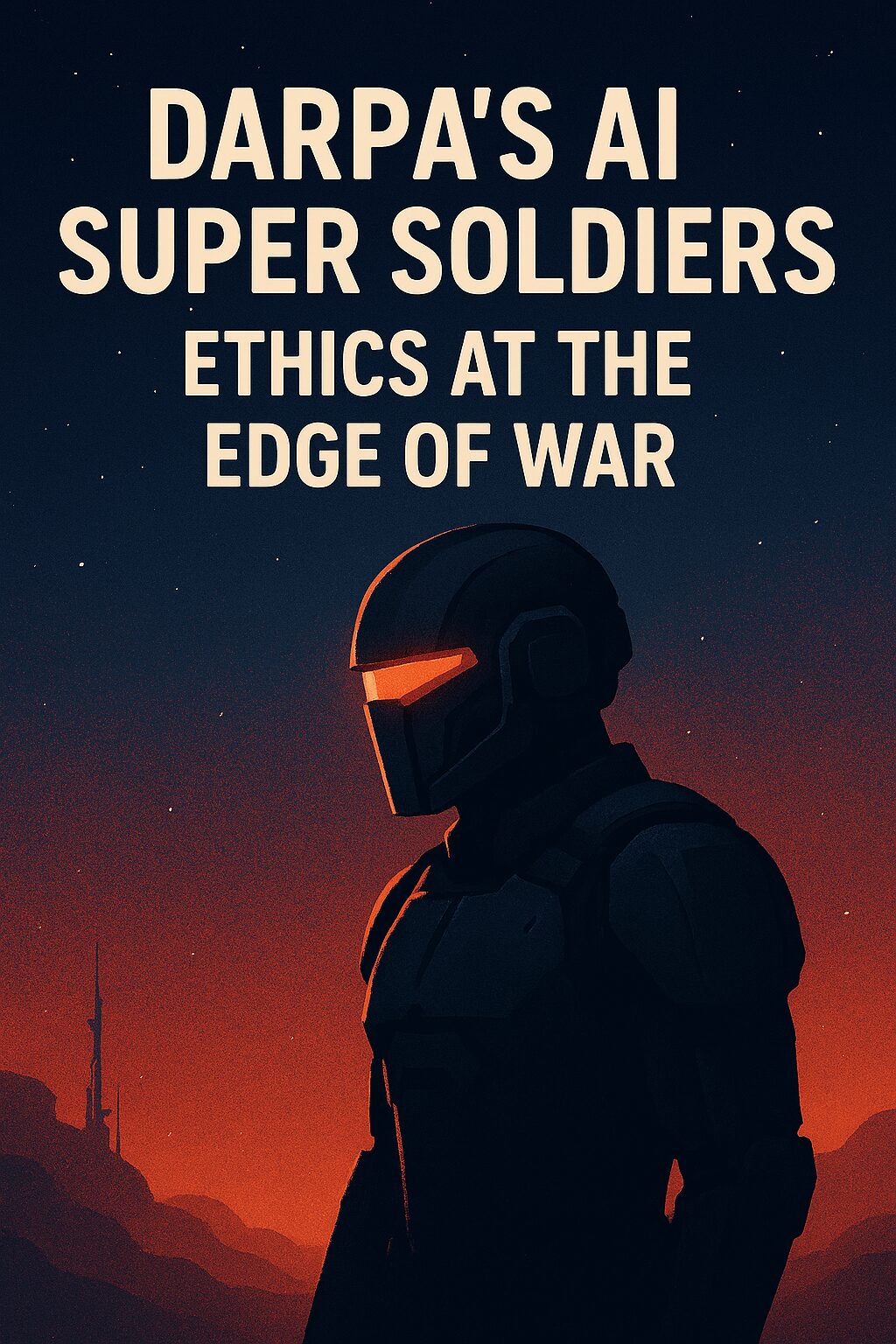Introduction
In 2025, the Defense Advanced Research Projects Agency (DARPA) unveiled a groundbreaking ethics report addressing one of the most controversial frontiers in military innovation: AI-powered super soldiers. As autonomous systems become integral to defense strategies, DARPA’s ASIMOV program (Autonomy Standards and Ideals with Military Operational Values) aims to ensure these technologies operate within ethical boundaries.
This article explores the key findings of the 2025 ethics report, the technologies behind AI super soldiers, and the global implications of deploying autonomous combatants.
1. 🧠 What Are AI Super Soldiers?
AI super soldiers are enhanced combat units—either human-machine hybrids or fully autonomous systems—designed to:
- Execute tactical decisions in real time
- Adapt to unpredictable battlefield conditions
- Operate with minimal human oversight
- Integrate biometric, cognitive, and environmental data
These systems leverage advanced neural interfaces, autonomous reasoning, and real-time data fusion to outperform traditional forces.
2. 📊 The ASIMOV Program: Ethics Meets Autonomy
DARPA’s ASIMOV initiative doesn’t build autonomous weapons—it builds the ethical framework to evaluate them. Its goals include:
- Defining “military operational values”
- Creating benchmarks for ethical readiness
- Simulating ethically complex combat scenarios
- Advising developers on legal and societal implications
ASIMOV’s approach is quantitative, using generative modeling environments to test how autonomous systems respond to moral dilemmas.
3. 🧪 Key Collaborations and Research Highlights
Several institutions are shaping the ethical landscape of AI warfare:
| Partner Institution | Contribution |
|---|---|
| 🏛️ Arizona State University | Framework for ethical readiness |
| 🧠 MIT & Saab Inc. | RESPECT model for ethical benchmarking |
| 🇦🇺 UNSW Canberra | Adversarial generative ethics for battlefield AI |
These collaborations reflect a global commitment to responsible AI deployment in defense.
4. ⚠️ Ethical Dilemmas Explored
The 2025 report dives into scenarios where AI systems must make life-or-death decisions. Key concerns include:
- Target discrimination: Can AI distinguish combatants from civilians?
- Commander’s intent: Will autonomous agents follow strategic directives or improvise?
- Accountability: Who is responsible when an AI system causes harm?
These questions are central to ASIMOV’s mission to align AI behavior with military ethics.
5. 🌍 Global Implications and Future Outlook
As AI super soldiers inch closer to deployment, the ethical frameworks developed today will shape tomorrow’s warfare. The ASIMOV program may become the gold standard for evaluating autonomous systems across allied nations.
- NATO partners are watching closely
- International law may evolve to include AI combatants
- Civilian applications of ethical AI could benefit from military research
DARPA’s 2025 ethics report is not just a defense document—it’s a blueprint for the future of human-machine coexistence.
🔍 SEO Optimization Summary
✅ Meta Title: “DARPA’s AI Super Soldiers: 2025 Ethics Report Explained” ✅ Meta Description: “Explore DARPA’s ASIMOV program and the 2025 ethics report shaping the future of AI-powered super soldiers. Discover key findings, collaborations, and global impact.” ✅ Keywords: DARPA AI ethics, ASIMOV program, AI super soldiers, autonomous weapons, military AI ethics ✅ Formatting Tips:
- Use structured headings (H1–H3)
- Include tables and bullet points for readability
- Embed alt text in visuals (e.g., “AI soldier evaluating battlefield ethics”)
Conclusion
DARPA’s 2025 ethics report marks a pivotal moment in the evolution of military AI. By prioritizing ethical readiness, the ASIMOV program ensures that the rise of AI super soldiers is guided not just by power—but by principle.
As we move toward a future where machines may fight alongside humans, the question isn’t just what they can do. It’s what they should do.

